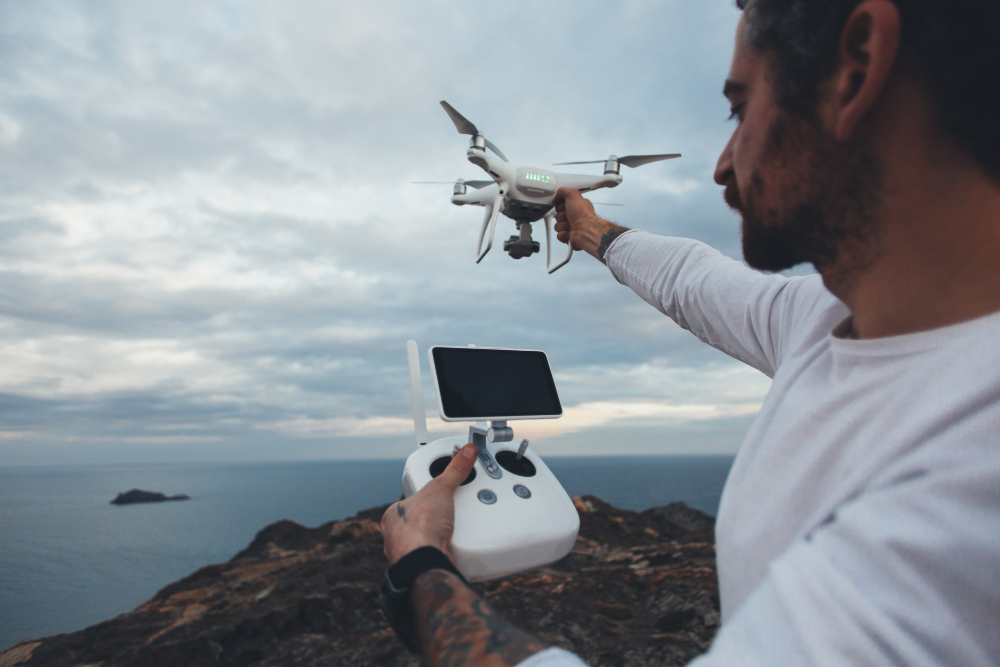It is one of the fundamental challenges of the modern-day construction industry to understand the water content of the soil of a site. This is essential in areas where pioneer structures are built offshore. The drone bathymetry survey appears to be an ever-elusive solution.
There is also a method to detect gases in the oil and gas industry. It is called the drone optical gas imaging process.
It uses thermal infrared cameras to detect and visualise gases like methane, ethane, benzene, etc. You can use this process in electrical power lines and other infrastructure.
Let us know about the bathymetry survey in detail below.
What is drone bathymetry?
It is a study of the underwater depth of ocean floors or lake floors. People use it to find out the underwater topography of a body of water. You can perform the drone bathymetry survey for an in-depth understanding of soil water content.
This survey involves mapping out the shape and how deep a terrain underwater is to describe the land that lies below.
The bathymetry survey is now an essential tool to industries like construction and oil industries as it concerns the laying of offshore pipes and facilitating offshore rigs. It is also useful in examining environmental impacts.
Other areas of importance include degrading companies, construction, and survey companies all over the world. Countries that focus on eye-catching infrastructure development conduct this survey.
This survey enables them to:
- Collect data to find out the amount of soil that needs to be removed from the sea or lake for dredging and capital projects
- To check if the required depth has been secured after the dredging exercise has been executed
- You can monitor it safely with the help of GPS and echo sounder with bathymetric equipment
- As the operators control bathymetric equipment from the water bank, the organisation mitigates the risks of conducting a survey
How does drone bathymetry work?
The drones work with an echo sounder, named SONAR (Sound, Navigation, and Ranging). You can measure distance and the amount of time it takes using this for an acoustic signal made from the bottom of the sea.
The drone payload is made up of the following components:
- Transducer or probe located under the surface. The job is to convert electrical signals to sound waves and sound waves to electrical signals. The transducer can serve as a receiver and transmitter at any time.
- The echo sounder is the other part of the device. It is a box that collects electrical impulses sent from the transducer. It is then transmitted in images to be displayed to the operator.
The transducer plays a major role by releasing ultrasound towards the ocean floor.
It sends the signals to the sounder to calculate the distance of the obstacle judging from the sent speed of the signal and the time taken to hit the ocean floor.
The SONAR can be a single beam or a multi-beam, depending on the criteria. You can categorise the single echo sounder into the following:
- The mono-frequency echo sounder, provides the depth for a given position.
- The bi-frequency echo sounder provides two depths.one depth is the sedimentary deposit, and the other is at the bottom of the lake.
The multi-beam echo sounder has a multi-frequency echo sounder that gives more precise water depth at different points.
Similarly, you can carry out Drone Optical Gas Imaging by attaching the sensors needed for the same. The waves emitted from the sensors will be reflected at different speeds depending on the thickness of the gas in question.
You can then use the results of these studies to take the necessary next steps.
Benefits of drone bathymetry survey
This survey comes with various benefits, including:
- Cost-effectiveness
The drone bathymetry surveys reduce the need for expensive manned vessels and extensive equipment setup. This reduces survey costs significantly.
- Efficiency
The surveys save valuable time and resources by covering large areas in a little time. This enables more frequent and extensive mapping.
- Safety
It has become safer to fly drones over time. You no longer need a human operator to fly a drone when something goes wrong. People do not have to enter the danger areas anymore as drones capture data from the air.
- Enhanced accuracy
The integrated system ensures the collection of highly accurate data using proper territory following advanced sensors. This enables detailed and reliable bathymetric maps.
- Accessibility
The drones can enter inaccessible sites like preserved natural areas. The drones carry this drone bathymetry survey more often. This replaces the possible dangerous manned operations.
- Compatibility
If the surveying operations involve the use of drones, the echo sounder offers compatibility with the drones. This simplifies the integration and operation of the sensor with the drone platform.
This makes it a convenient choice for users using drones.
Key Takeaways
The use of drone bathymetry surveys is a great benefit owing to its ability to examine the risks of direct human interference. Drone technology also enables one to see the exact and current hydrographic information and monitor the change or evolution of terrain.
Don’t forget to use the drone optical gas imaging technique also to check the availability of the gases in the industries.
Visit our home-page for more information




